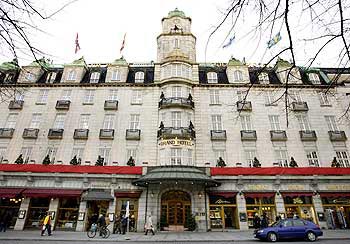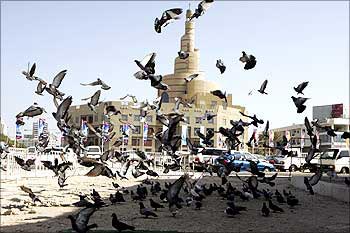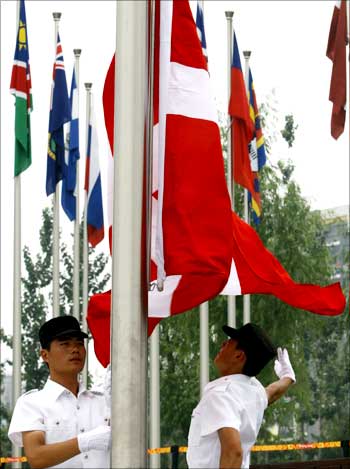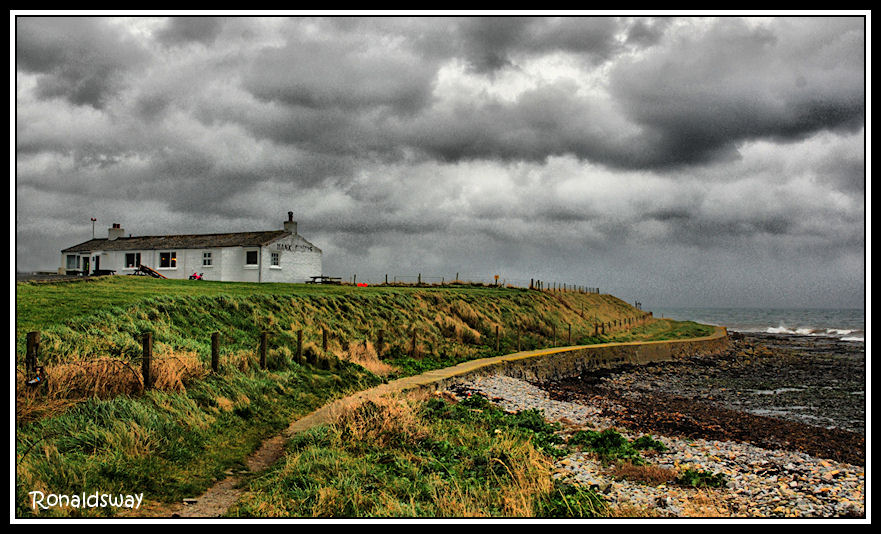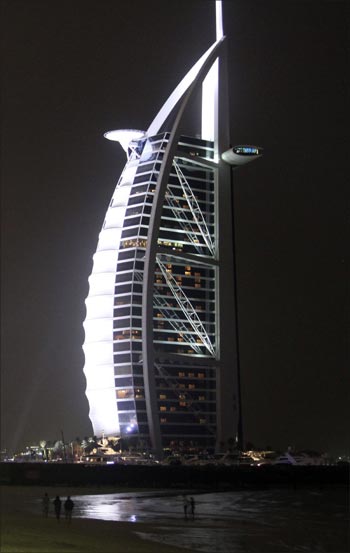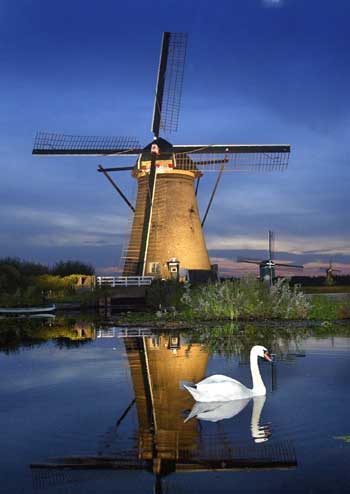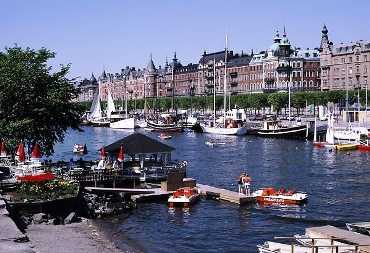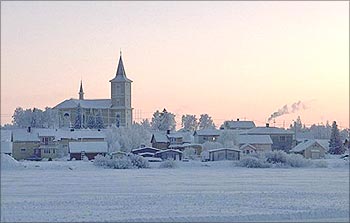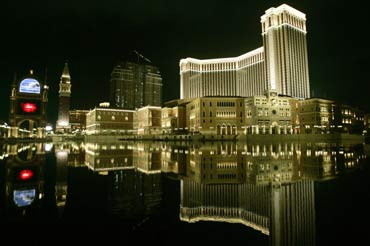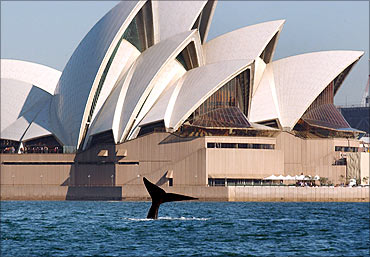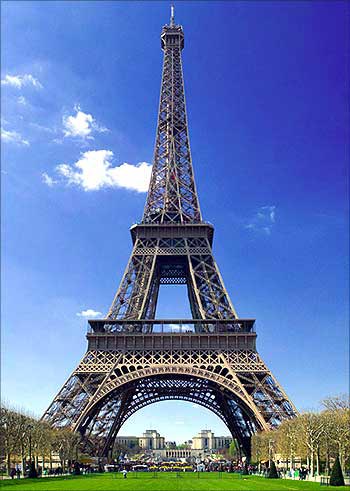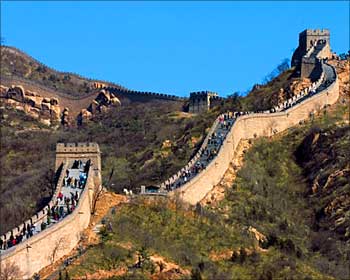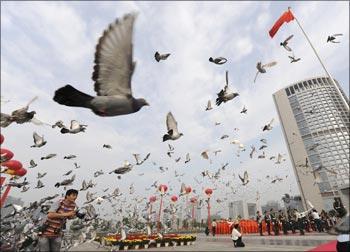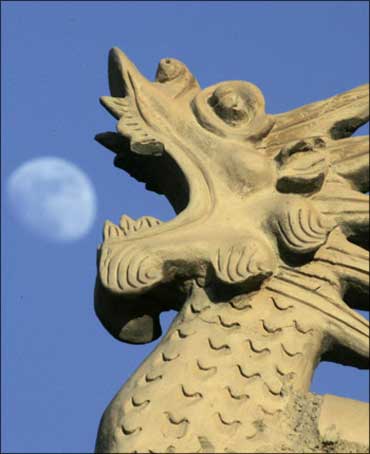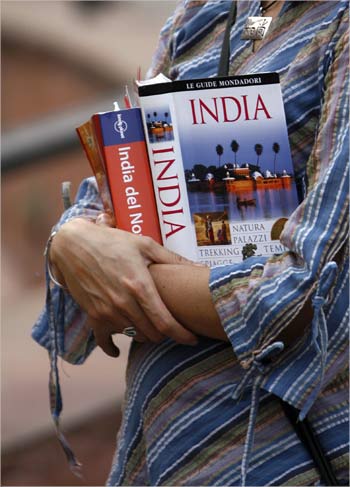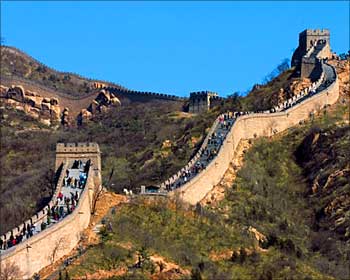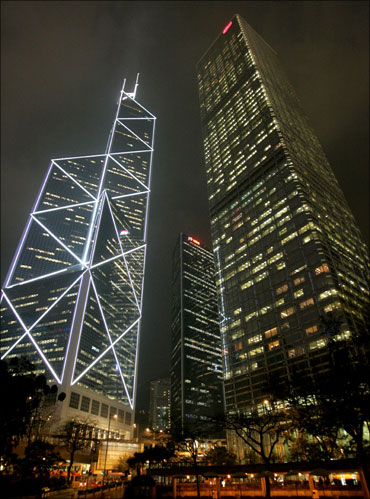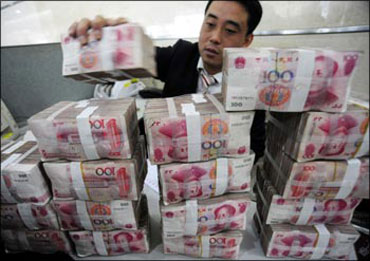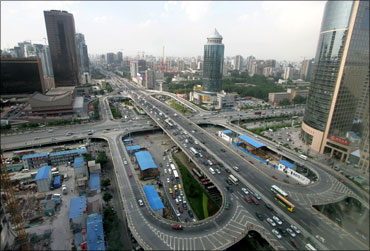Talking to diets one day, a friend of said she could give up anything but roti. I said, No, the other stuff was more fun. But she said Think about it: would you enjoy alu gohst without it? Or gobi matar? Or dal?
And she was right: there are days when i try to cut down the no. Of rotis in my lunch and the meal becomes boring. However delicious the daal sabzi, they're incomplete.
How does one describe the taste of a roti? It's not salty or sweet or anything; it's wrapper, a foil, a base for other taste. And yet the smell of a phulka on a fire, getting speckled and puffing up, or a paratha being fried, turning golden brown, crisp outside and flaky within, and very definite flavours.
The one i find most compelling, though, is when the smell of one getting baked in a tandoor wafts across from somewhere; you can almost taste the crisp browned edges and the little bumps of air pockets; there's almost a sweetness to it, calculated to whip up an appetite.
Will continue........
Top mobile phones you can't live with
Sunday, October 31, 2010
Monday, October 11, 2010
Nations with highest per capita income
India's per capita income grew by 10.5 per cent to Rs 44,345 in 2009-10 against Rs 40,141 in the year-ago period, according to government data.
The World Bank, however, pegs India's per capita income at a much higher $1,180 per year. India ranks a poor 161st in the world in terms of per capita incomes.
The per capita income was slightly higher than Rs 43,749 as calculated by the Central Statistical Organisation in its advance estimates for FY10. However, per capita income grew by 5.6 per cent last fiscal if it is calculated on the basis of 2004-05 prices, which is a better way of comparison and broadly factors inflation.
Per capita income (at 2004-05 prices) stood at Rs 33,588 in FY10 against Rs 31,821 in the previous year, according to estimates of national income released.
Per capital income means income of each Indian if national income is evenly divided among the country's population of 117 crore (Rs 1.17 billion).
The size of the economy rose to Rs 62,31,171 crore (Rs 62.3 trillion) in the last fiscal, up 11.8 per cent over Rs 55,74,449 crore (Rs 55.7 trillion) in FY09.
According to the World Bank categories: Nations with per capita income (PCI) less than $935 are 'low income;' nations with PCI from $936 to $3,705 are 'lower middle income;' those with PCI from $3,706 to $11,455 are 'upper middle income;' and those with PCI from $11,456 or more are 'high income.'
Monaco, a major tourist resort in the Mediterranean, has the highest per capita income in the world at a breathtaking $203,900. That's more than 175 times the per capita income in India.
The Principality of Monaco has booming high value-add industries and a strong services sector. Monaco has no income tax, but it makes most of its money from being a tax haven.
Natives of Liechtenstein, a small country bordering Switzerland and Austria, are the second richest in the world in terms of annual per capita income.
The principality has an industrialised economy, with banking and financial services being the mainstay. Tourism too is a major revenue earner for the nation.
The personal income tax rates in Liechtenstein too are exceedingly low: basic income tax rate is 1.2 per cent on income up to 200,000 Swiss Francs, and maximum is 5 per cent on income over 2 million Swiss Francs a year.
3. Norway: $86,440
Norway's per capita income stands at $86,440, which is the third highest in the world.
Norway has a mixed economy consisting of state-owned businesses and a robust free market. It's a highly developed and an industrialised state. Fishing, petroleum, hydel power, minerals contribute heavily to the nation's GDP.4. Luxembourg: $74,430
Luxembourg's per capita income is at $74,430. That makes it the world's fourth highest PCI.
Luxembourg is located in Europe and is bordered by Belgium, France, and Germany.
The nation has highly developed industrial and financial sectors.
Luxembourg, one of the world's richest cities, also offers higher salaries. On an average, workers in Western European cities receive more than three times the pay of their colleagues in Eastern Europe.5. Channel Islands: $68,610
The per capita income in Channel Islands is a whopping $68,610. That makes it the fifth highest per capita income in the world.
Tourism is the major revenue generator for the Channel Islands. The islands of Jersey and Guernsey also provide financial services and are tax havens.
The Bailiwick of Jersey is a British Crown Dependency off the coast of Normandy, France. Jersey's major agricultural products are potatoes and dairy produce.
The source of milk is Jersey cattle, a small breed of cow that has also been acknowledged (though not widely so) for the quality of its meat.
Small-scale organic beef production has been reintroduced in an effort to diversify the industry.
6. Qatar: $66,100
The per capita income of Qataris is $66,100, the sixth highest in the world.
Qatar is an Arab emirate located in the Persian Gulf.
The nation's economy mainly depends on its huge oil and natural gas reserves. There is no income tax in Qatar.
Qatar is an oil- and gas-rich nation with world's third largest gas reserves.
Qatar has experienced rapid economic growth over the last several years on the back of high oil prices.
7. Bermuda: $60,000
Bermuda, a tourist's delight, is located in the North Atlantic Ocean.
Bermuda's per capita income is almost 30 per cent more than that of the United States. The tiny island nation's per capita income stands at just above $60,000. It has the seventh highest per capita income in the world.
Bermuda is a major financial centre and is particularly attractive because of its low taxation rates. Financial services is the nation's largest industry, followed by tourism.
Bermuda is a British overseas territory in the North Atlantic Ocean. Its capital is Hamilton. It is the oldest and most populous remaining British overseas territory. Bermuda has a very affluent economy with finance as its largest sector followed by tourism.
As the offshore domicile of many foreign companies, Bermuda has a highly-developed international business economy; it is an exporter of financial services, primarily insurance, reinsurance, investment funds and special purpose vehicles.
8. Denmark: $58,930
Denmark's per capita income is at $58,930. According to World Bank rankings, it is the world's eighth highest PCI.
Denmark has a highly industrialised economy, with robust agricultural and corporate sectors.
Despite being one of the most competitive nations, it has a very weak financial regulatory system. Also, its labour laws are very lax and tilted heavily in favour of the employers.
9. Switzerland: $56,370
The Swiss enjoy a financially comfortable life, with a per capita income of $56,370. Switzerland ranks ninth in the World Bank's per capita income rankings.
Switzerland, a truly capitalist economy, has many giant banks and multinational corporations.
It also has highly developed industries in sectors like pharmaceuticals, chemicals, machine parts, electronics, precision instruments, banking, tourism, etc. Dairy farming too is an age old industry in Switzerland. It has very low tax rates.
10. Kuwait: $53,930
Kuwaitis have the tenth highest per capita income in the world.
The country has the world's fifth largest oil reserves. The Kuwait Stock Exchange, which has about 200 firms listed, is the second-largest stock exchange in the Arab world.
Petroleum and petroleum products now account for nearly 95 per cent of Kuwait's export revenues, and 80 per cent of government income.
Kuwait is regarded as one of the most economically developed countries in the Arab League.
11. Isle of Man: $51,310
Isle of Man natives have the 11th highest annual per capita income in the world at $51,310.
Tourism, banking and manufacturing are the key contributors to the economy of the Isle of Man.
The Isle of Man has free access to European Union markets for goods.
The Isle of Man has income tax rates of 10 per cent and 20 per cent. It has no capital gains tax, wealth tax, stamp duty, death duty or inheritance tax.
The island is a British Crown dependency in the Irish Sea.
12. San Marino: $50,670
The economy of San Marino is mostly driven by tourism. Its citizens enjoy the 12th highest per capita income in the world at $50,670 per annum.
However, the nation's other industries like textiles, agriculture and banking also make a significant contribution to San Marino economy.
13. United Arab Emirates: $50,240
The United Arab Emirates has a per capita income of over $50,240. It is the 13th highest in the world.
The United Arab Emirates has a highly developed economy, and has a rich source of revenue in tourism and its huge oil reserves.
14. Netherlands: $49,350
The Dutch have the world's 14th highest per capita income at $49,350.
The Netherlands is the world's 16th largest economy, which is mostly driven by manufacturing, tourism, and services.
The Netherlands is a founding member of the European Union, the OECD and the World Trade Organization.
15. Sweden: $48,930
Sweden's per capita income is $48,930, making its PCI 15th-highest in the world.
Sweden has a very well developed industry in sectors like engineering, telecom, power, automobiles, pharmaceuticals, etc. The nation's economy is heavily dependent on foreign trade. It also has highly skilled work force.
16. Cayman Islands: $48,140
The per capita income of Cayman Islands is more than $48,140, as per World Bank figures. It has the 16th highest PCI in the world.
The Cayman Islands are situated in the Caribbean Sea. It is a major financial centre and also one of the world's best known tax havens. The nation's economic mainstays are tourism and financial services.
 The Cayman Islands is a British overseas territory located in the western Caribbean Sea. The territory comprises the islands of Grand Cayman, Cayman Brac, and Little Cayman, located south of Cuba and northwest of Jamaica. The territory is a major offshore financial centre in the Caribbean.
The Cayman Islands is a British overseas territory located in the western Caribbean Sea. The territory comprises the islands of Grand Cayman, Cayman Brac, and Little Cayman, located south of Cuba and northwest of Jamaica. The territory is a major offshore financial centre in the Caribbean.With an average income of around $42,000, Caymanians enjoy the highest standard of living in the Caribbean.
The islands print their own currency, the Cayman Islands Dollar (KYD), which is pegged to the US dollar at a fixed rate of 1 KYD = $1.25.
17. United States of America: $47,240
America's per capita income is $47,240. It's the 17th-highest in the world.
The United States is mostly a capitalist economy, with huge mineral and oil reserves, apart from fantastic infrastructure, skilled work force, and the highest number of the world's largest corporations.
The country has highly developed sectors, like banking, financial services, automobile, agriculture, manufacturing, energy, etc.
18. Austria: $46,850
Austria has a strong social market economy and a high standard of living as befits a nation that is amongst the world's richest. Austrians enjoy the 18th highest per capita income in the world.
Austria is a highly industrialised nation, but has a very strong labour movement.
Tourism, industry and the services sector add to the nation's economy.
19. Finland: $45,680
Finland has a highly developed industry and a mixed economy. It is one of the richest nations in the world, and has consistently scored very high on most parameters like connectivity, standard of living, quality of life, economic freedom, etc.
Finland, at $45,680 per annum, has the world's 19th highest per capita income.
The services sector contributes the major bulk to the nation's economy, followed by manufacturing.
20. Macao SAR, China: $45,360
Macau has the world's 20th highest per capita income at $35,360.
It is one of the most open economies in the world. Tourism and garment exports are the biggest revenue generators for Macau.
21. Belgium: $45,310
The Belgian open economy has used its well developed transport network, its central location in Europe, its highly industrial and commercial base to grow at a rapid pace.
Belgium has the world's 21st highest per capita income at $45.310.
22. Ireland: $44,310
The Irish have a per capita income of $44,310, ranking them 22nd in the world.
Ireland too has made rapid strides in the field of information technology. Construction, apart from agriculture, too is an important part of the Irish economy.
Ireland is the third-largest island in Europe and the 20th largest island in the world.
The focus of economy shifted from agriculture to a modern knowledge economy. It now stresses on services and high-tech industries and is dependent on trade, industry and investment.
The 1995 to 2000 period of high economic growth led many to call the country the Celtic Tiger.
23. Australia: $43,770
Australia has a highly developed market economy. Almost 68 per cent of the Australian economy is dominated by its service sector.
Australians enjoy the world's 23rd highest per capita income at $43,770.
The Australian dollar is the currency of the Commonwealth of Australia.
24. Iceland: $43,220
At $43,220, the per capita income of Iceland is the world's 24th highest.
Iceland has a very healthy power sector which helps it to be a highly industrialised country.
Apart from manufacturing, the nation is also taking big strides in the fields of software generation, biotechnology, tourism, and financial services.
25. France: $42,680
France has the fifth largest economy in the world, behind United States, China, Japan and Germany. At $42,680, the French have the world's 25th highest annual per capita income.
France is a highly industrialised country with sectors like energy, telecommunications, aerospace, defence, engineering, and automobile production boosting its robust economy.
After Germany, it is also Europe's largest economy. Tourism and agriculture too add to its economy.
26. Germany: $42,560
Germany has the largest economy in Europe, the fourth-largest by nominal GDP in the world, and fifth by GDP in 2008.
Germans enjoy the world's 26th highest per capita income at $42,560 per year.
The service sector contributes around 70 per cent of the total GDP, industry 29.1 per cent, and agriculture 0.9 per cent to the economy.
124: China: $3,590
China's per capita income is $3,590. It ranks 124th in the world in terms of per capita income.
China is the world's second largest economy, with its GDP standing at slightly more than $7 trillion. India, by comparison, touched the $1-trillion mark in 2007.
China, the world's factory, has a highly developed manufacturing sector. It has a huge market which acts as a magnet for big multinationals who pour in billions of dollars into the economy to grab a chunk of the massive Chinese market.
The country also has a very well developed telecommunications market, apart from robust agricultural and industrial sectors.
171: Pakistan: $1,020
Pakistan's per capita income is at $870. It ranks 171st in the world.
For the past few years, India's neighbour has been growing at an impressive rate of about 7 per cent. Its economy mainly comprises agriculture, services, telecommunications, software, automotives, textiles, etc.
The story behind China's growth numbers
Much newsprint has been dispensed recently discussing China racing past Japan to become the world's second-largest economy.
The second quarter of 2010 saw China's gross domestic product standing at $1.34 trillion and Japan's at $1.29 trillion.
But what does this development mean for Asia and the world?
The recent numbers simply mark the completion of a trajectory that started taking shape over 15 years ago.
It is not a one-off development that is likely to be reversed anytime soon.
In terms of purchasing power parity, which takes into account the goods and services a country's currency actually buys at home, China had surpassed Japan as far back as 1995.
Back in 1995, Japan was already beginning to lose its pre-eminent position in the manufacturing world -- a trend it never quite managed to reverse.
However, at that time the Chinese economy was driven overwhelmingly by price-competitive exports, which allowed Japan to continue to dominate the high value-added manufacturing sector.
Today, though low-cost exports continue to anchor China's manufacturing sector, Chinese companies are steadily moving up the value chain.
China is now beginning to strike at the heart of Japan's competitive advantage, namely, high-end manufacturing.
The 2005 acquisition of IBM's PC Company Division by Lenovo, for example, heralded China onto the world's PC stage.
Even in automobile manufacturing, traditionally the stronghold of the Japanese (Toyota is still the No. 1 automaker in the world), Chinese players like BYD Auto are positioning themselves to be the leading players in what is largely expected to be the next wave for the auto industry -- hybrid and environment-friendly vehicles.
Established in 2003, by 2008 BYD Auto was selling the world's first mass-produced plug-in hybrid vehicle -- the same year that Warren Buffett spent $230 million to buy a 10 per cent stake in the company.
BYD is already exporting cars to Africa, South America and West Asia and has plans to enter the European, Israeli and US markets.
A planned joint venture with Daimler will focus on the development of up-market, BYD-branded sedans.
Companies like BYD have been powering growth of the Chinese economy to bring it to its current position.
Even so, the argument is often made that China's per capita GDP still lags considerably behind industrialised countries and significant intra-regional differences in per capita GDP remain in China.
This only highlights the further potential for growth in China, as well as the risks if this growth is not balanced and equitable.
What is arguably the most significant aspect of China's growth is that it has percolated down to the basic roti, kapda aur makaan level -- certainly more than in many other developing countries.
In the last 30 years, the percentage of China's population living on less than $2 a day has reduced from over 95 per cent to about 35 per cent.
Over 90 per cent of rural households in China have electricity compared to 50 per cent in India.
China's infant mortality is half of India's and average life expectancy is 10 years higher.
China's grain production stands at double that of India and the countries' population levels are comparable.
The ground that China has covered in terms of poverty reduction and provision of basic needs in a period of 30 years is astonishing.
Another unique feature of China's growth story is the role of women. China today has one of the highest participation rates of women in the workforce and an exceptionally high percentage of these women rise to senior positions in their jobs.
China's numbers on this front are not only higher than other developing countries but are also significantly higher than the US.
Whether women's involvement in the workforce is driven by China's one-child policy or is a fallout of its communist legacy, the outcome of gender-inclusive growth is a desirable one.
In fact, one of the biggest challenges that Japan faces today is how to draw women back to the workplace.
In the light of a strict immigration regulation, drawing Japanese women into the workforce is one of the last resorts for Japan to expand its working population and offset a declining birth rate and support the growing cohorts of retirees.
China's rapid growth has also resulted in growing political might and ambition.
This is natural since the UK, Germany, Japan and the US have all, at some point of time in their history, used their economic prowess to establish a political presence in the world.
This is no justification of the trend but an acknowledgement of its inevitability.
China today provides easy target practice for the rest of the world.
Politicians from Australia to the US have been quick to attribute their falling economic fortunes to China's trade malpractices.
Have those countries ever stopped to think about what their economies might look like today if China did not exist?
Though there may be much ambiguity the world over about China's emergence, the world needs China.
A manufacturing powerhouse, China's low-cost exports today are underpinning worldwide consumer spending and company profits.
Asia today may have decoupled from the West but the rest of world, including Asia, is far from decoupled from China.
The second quarter of 2010 saw China's gross domestic product standing at $1.34 trillion and Japan's at $1.29 trillion.
But what does this development mean for Asia and the world?
The recent numbers simply mark the completion of a trajectory that started taking shape over 15 years ago.
It is not a one-off development that is likely to be reversed anytime soon.
In terms of purchasing power parity, which takes into account the goods and services a country's currency actually buys at home, China had surpassed Japan as far back as 1995.
Back in 1995, Japan was already beginning to lose its pre-eminent position in the manufacturing world -- a trend it never quite managed to reverse.
However, at that time the Chinese economy was driven overwhelmingly by price-competitive exports, which allowed Japan to continue to dominate the high value-added manufacturing sector.
Today, though low-cost exports continue to anchor China's manufacturing sector, Chinese companies are steadily moving up the value chain.
China is now beginning to strike at the heart of Japan's competitive advantage, namely, high-end manufacturing.
The 2005 acquisition of IBM's PC Company Division by Lenovo, for example, heralded China onto the world's PC stage.
Even in automobile manufacturing, traditionally the stronghold of the Japanese (Toyota is still the No. 1 automaker in the world), Chinese players like BYD Auto are positioning themselves to be the leading players in what is largely expected to be the next wave for the auto industry -- hybrid and environment-friendly vehicles.
Established in 2003, by 2008 BYD Auto was selling the world's first mass-produced plug-in hybrid vehicle -- the same year that Warren Buffett spent $230 million to buy a 10 per cent stake in the company.
BYD is already exporting cars to Africa, South America and West Asia and has plans to enter the European, Israeli and US markets.
A planned joint venture with Daimler will focus on the development of up-market, BYD-branded sedans.
Companies like BYD have been powering growth of the Chinese economy to bring it to its current position.
Even so, the argument is often made that China's per capita GDP still lags considerably behind industrialised countries and significant intra-regional differences in per capita GDP remain in China.
This only highlights the further potential for growth in China, as well as the risks if this growth is not balanced and equitable.
What is arguably the most significant aspect of China's growth is that it has percolated down to the basic roti, kapda aur makaan level -- certainly more than in many other developing countries.
In the last 30 years, the percentage of China's population living on less than $2 a day has reduced from over 95 per cent to about 35 per cent.
Over 90 per cent of rural households in China have electricity compared to 50 per cent in India.
China's infant mortality is half of India's and average life expectancy is 10 years higher.
China's grain production stands at double that of India and the countries' population levels are comparable.
The ground that China has covered in terms of poverty reduction and provision of basic needs in a period of 30 years is astonishing.
Another unique feature of China's growth story is the role of women. China today has one of the highest participation rates of women in the workforce and an exceptionally high percentage of these women rise to senior positions in their jobs.
China's numbers on this front are not only higher than other developing countries but are also significantly higher than the US.
Whether women's involvement in the workforce is driven by China's one-child policy or is a fallout of its communist legacy, the outcome of gender-inclusive growth is a desirable one.
In fact, one of the biggest challenges that Japan faces today is how to draw women back to the workplace.
In the light of a strict immigration regulation, drawing Japanese women into the workforce is one of the last resorts for Japan to expand its working population and offset a declining birth rate and support the growing cohorts of retirees.
China's rapid growth has also resulted in growing political might and ambition.
This is natural since the UK, Germany, Japan and the US have all, at some point of time in their history, used their economic prowess to establish a political presence in the world.
This is no justification of the trend but an acknowledgement of its inevitability.
China today provides easy target practice for the rest of the world.
Politicians from Australia to the US have been quick to attribute their falling economic fortunes to China's trade malpractices.
Have those countries ever stopped to think about what their economies might look like today if China did not exist?
Though there may be much ambiguity the world over about China's emergence, the world needs China.
A manufacturing powerhouse, China's low-cost exports today are underpinning worldwide consumer spending and company profits.
Asia today may have decoupled from the West but the rest of world, including Asia, is far from decoupled from China.
B-school admissions: How to write an SoP
An important aspect of B-school admissions is the submission of the Statement of Purpose candidates need to submit. But what is it and how do you go about writing it? Read on to find out...
Your Statement of Purpose (SOP) is your personal assertion of who you are, what or who has influenced your career path so far, your interests (both professional as well as personal) and what you intend to do for the rest of your life.
Why do B-schools ask for an SOP?
An SOP is a way a management institute can know you beyond what can be known from your performance in academics and the entrance tests. It provides a means of qualitatively evaluating your clarity regarding your career goals, how an MBA will benefit you, and ultimately your suitability for an MBA (which also includes how you will add diversity and value to the MBA class).
What should a good SOP contain?
A well-written SOP will offer clarity on why you would like to pursue management studies in general, and the institute that you have applied to in particular. Your SOP should mention compelling reasons why you are suitable for an MBA, and how an MBA connects to your goals. For example, your goal may include gaining international exposure in banking and eventually becoming a top banker in a foreign bank. OR you may want to join your family business and knowing management principles will empower you to modernise the business and make it grow.
Brevity is of the essence since you need to communicate a lot about yourself in a few words. Create a list of points that you would like to address in your SOP, then write them, and then edit them. Show your SOP to as many people as possible -- but make sure that the final version is something that you completely agree with.
Leadership is a keyword that attracts and excites every panel but it can turn out to be a double-edged sword. If you want to make use of the word, rest assured you will be questioned on this during the interview. Back up your claim with hard data regarding your achievements at leading teams -- either formally or informally. For example, if you organised your college fest or even your elder sister's wedding, it is a feather in your cap.
Given the length constraints, you may not have the space to explicitly state and justify how the given college is the right choice for you or what specialisation you are looking for -- marketing, finance, HRM etc. But keep in mind that this may come up as an adjunct to the points that you have made in your SOP. Avoid writing in glittering generalities; such as 'I am attracted to the vibrant student community in your college' (which student community is not vibrant?) OR 'the ambience/ environment in your college is conducive to learning' OR 'I am impressed by the broad depth of learning that your faculty brings to the table' (don't most colleges have that?) unless you can substantiate these statements in a convincing manner.
If your bachelor's degree was in commerce you can mention your firm foundation in various financial concepts, your adeptness in number crunching and ability to understand financial analysis (important for a Finance Manager). If you are from an arts background, you may mention your well-honed written communication skills (important for any executive position) and your ability to see the 'big picture' of any problem, thereby helping you to come up with effective solutions.
Your SOP needs to be grammatically correct and have a smooth flow. It should also be within the prescribed word limit. Avoid using esoteric words or technical jargon unless you are sure of their meanings. Phrases like 'good cash flow management' and 'technological scalability' are to be used only if you know their meanings. Avoid pompous language like, 'With the advent of globalisation' and 'most companies need to be re-engineered for enhancing shareholder value' unless you are absolutely clear about these conceptually and how they impact you personally. You may also find these words difficult to justify if cross-questioned during the interview.
Remember, virtually every the candidates called for the Extempore and Personal Interview round will have a reasonably good academic record. There will not be much to choose from between you and someone else. A coherent, well written SOP can help steer the interview to your area of strength and provide you with that winning edge.
Happy writing!
Given the length constraints, you may not have the space to explicitly state and justify how the given college is the right choice for you or what specialisation you are looking for -- marketing, finance, HRM etc. But keep in mind that this may come up as an adjunct to the points that you have made in your SOP. Avoid writing in glittering generalities; such as 'I am attracted to the vibrant student community in your college' (which student community is not vibrant?) OR 'the ambience/ environment in your college is conducive to learning' OR 'I am impressed by the broad depth of learning that your faculty brings to the table' (don't most colleges have that?) unless you can substantiate these statements in a convincing manner.
Link your undergraduate studies to the role of a manager
Try and establish a connection between what you learnt in your bachelor's degree and its usefulness to the real-world role of a manager. For example, if you studied engineering, you can mention that you have good analytical and logical reasoning skills (important for a manager). If your bachelor's degree was in commerce you can mention your firm foundation in various financial concepts, your adeptness in number crunching and ability to understand financial analysis (important for a Finance Manager). If you are from an arts background, you may mention your well-honed written communication skills (important for any executive position) and your ability to see the 'big picture' of any problem, thereby helping you to come up with effective solutions.
Turn your personality type into a winning position
Whatever be your type of personality -- whether you are an introvert or an extrovert -- it would be great if you could link it with your future course of work or profession. If you are an extrovert and you like to meet new people and are able to make friends easily, you are probably on your way to becoming a good marketing professional. If you are somewhat shy and reticent but have excellent academic results and are well read, you possess high intellect and you are well suited for any work that calls for a lot of thought or analysis such as technical analysis in Finance or Operations research which is used in logistics or brand-building exercises in marketing etc.Your SOP needs to be grammatically correct and have a smooth flow. It should also be within the prescribed word limit. Avoid using esoteric words or technical jargon unless you are sure of their meanings. Phrases like 'good cash flow management' and 'technological scalability' are to be used only if you know their meanings. Avoid pompous language like, 'With the advent of globalisation' and 'most companies need to be re-engineered for enhancing shareholder value' unless you are absolutely clear about these conceptually and how they impact you personally. You may also find these words difficult to justify if cross-questioned during the interview.
An unbiased feedback mechanism
Once you have completed writing your SOP carry out a simulation exercise. Show the SOP to friends/ family and request them to ask you questions based on what is written there (in effect, they will be acting as the admissions committee). This will help instill immense confidence in you ahead of the real interview and will help you to further polish and refine your SOP to your satisfaction.Remember, virtually every the candidates called for the Extempore and Personal Interview round will have a reasonably good academic record. There will not be much to choose from between you and someone else. A coherent, well written SOP can help steer the interview to your area of strength and provide you with that winning edge.
Happy writing!
www.TestFunda.com is the leader in online MBA test prep. With a core management team of 4 IIT-IIM alumni & 185,000+ registered users, TestFunda is a one-stop solution for all important MBA entrance tests. Get FREE downloadable tests of CAT, XAT, FMS, IIFT, JMET, NMAT, SNAP, Strategies by CAT 100%tilers and a whole host of learning resources.
Subscribe to:
Posts (Atom)



